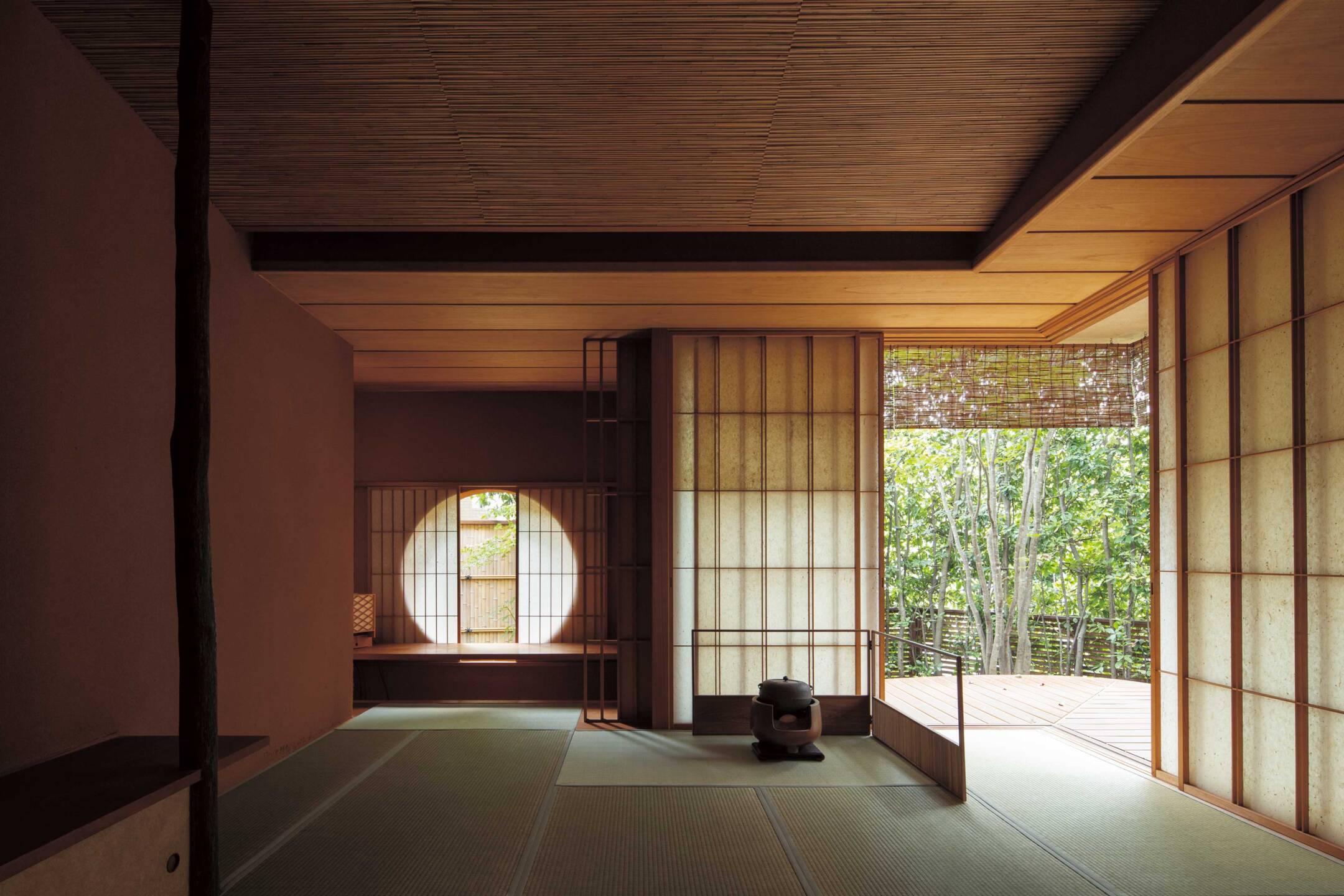About us
The Washitsu Association

The Washitsu Association – our aims and activities
“Washitsu” are the traditional style rooms developed in Japan as an existence inseparable from our living culture. Accommodating diverse activities of our life such as dining, sleeping, relaxing and gathering on family occasions, receiving guests, holding receptions and enjoying seasonal festivals, washitsu have deeply permeated our daily life. However, such washitsu that symbolize our traditional living culture are now rapidly disappearing. This means not only the physical existence of the washitsu architectural style characterized by features such as tatami flooring and shoji sliding doors , but also the disappearance of whole aspects of our sense of life and space fostered by the activities in washitsu that include life principles, the way of living, the experience of space flowing from inside to outside and out to the street, as well as the traditional construction techniques. Using the term "washitsu culture" to identify this traditional living culture, we must care for this washitsu culture more than ever at this moment when it is disappearing.
The Washitsu Association was established in order to revitalize and re-formulate new washitsu culture for the future, working together with residents, keepers and citizens, bridging the knowledge of researchers, policy decision makers, architects and designers, artisans such as traditional woodworkers, carpenters, plasterers and tatami makers and people in the washitsu industry -- from forestry to house builders and construction companies.
We conduct the study of the existence of washitsu culture in our communities considering its cultural and regional diversity; organize promotional and educational activities such as lecture series and field studies; carry out the preparation of policy recommendations to the government for the revision of laws and guidelines for support of the washitsu culture in the public system; and collaborate with the related industries for the development of better washitsu building conditions.
Through these activities, we identify and establish the intrinsic value of washitsu culture and its meaning in our international community, and present washitsu to the world, demonstrating its importance as a unique example of a way of living and as a model of cultural sustainability, pursuing recognition as UNESCO Intangible Cultural Heritage.
Established 26 March 2024 in Tokyo
The Washitsu Association was established in order to revitalize and re-formulate new washitsu culture for the future, working together with residents, keepers and citizens, bridging the knowledge of researchers, policy decision makers, architects and designers, artisans such as traditional woodworkers, carpenters, plasterers and tatami makers and people in the washitsu industry -- from forestry to house builders and construction companies.
We conduct the study of the existence of washitsu culture in our communities considering its cultural and regional diversity; organize promotional and educational activities such as lecture series and field studies; carry out the preparation of policy recommendations to the government for the revision of laws and guidelines for support of the washitsu culture in the public system; and collaborate with the related industries for the development of better washitsu building conditions.
Through these activities, we identify and establish the intrinsic value of washitsu culture and its meaning in our international community, and present washitsu to the world, demonstrating its importance as a unique example of a way of living and as a model of cultural sustainability, pursuing recognition as UNESCO Intangible Cultural Heritage.
Established 26 March 2024 in Tokyo
Managing Committee Members
President:
Seizo UCHIDA (Professor, Kanagawa University)
Vice Presidents:
Nobuko INABA (Emerit Professor, University of Tsukuba)
Eriko OKA (Professor, Kansai University)
Asae OZAWA (Professor, Tokai University)
Kunio KIRISAKO (Vice President, Kyoto Architectural College)
Meiji FUJITA (Dean, Engineering Department, Nara Women’s University)
Executive Members:
Akira UENISHI (Principal, Akira Unenishi Design)
Yasuko KAMEI (Associate Professor, Nihon University)
Shinichi MICHIE, Secretary General (Councilor, Housing Research Foundation JUSOKEN)
Members:
Kousuke IZUMI (Principal, Kousuke Izumi Architects)
Ayako ICHIOKA (Lecturer, Nihon University)
Keiko ITO (Auditor, AQ Group Co., Ltd.)
Setsuko NAKAJIMA (Professor, Kyoto University)
Keisuke FUJII (Professor Emeritus, University of Tokyo)
Advisors:
Mineki HATTORI (Professor Emeritus, Chiba University)
Shuichi MATSUMURA (President, Kobe Design University)
Auditors:
Mitsuo TAKADA (Vice President, Kyoto Arts and Crafts University)
Naoki TANI (Professor Emeritus, Osaka City University)
Seizo UCHIDA (Professor, Kanagawa University)
Vice Presidents:
Nobuko INABA (Emerit Professor, University of Tsukuba)
Eriko OKA (Professor, Kansai University)
Asae OZAWA (Professor, Tokai University)
Kunio KIRISAKO (Vice President, Kyoto Architectural College)
Meiji FUJITA (Dean, Engineering Department, Nara Women’s University)
Executive Members:
Akira UENISHI (Principal, Akira Unenishi Design)
Yasuko KAMEI (Associate Professor, Nihon University)
Shinichi MICHIE, Secretary General (Councilor, Housing Research Foundation JUSOKEN)
Members:
Kousuke IZUMI (Principal, Kousuke Izumi Architects)
Ayako ICHIOKA (Lecturer, Nihon University)
Keiko ITO (Auditor, AQ Group Co., Ltd.)
Setsuko NAKAJIMA (Professor, Kyoto University)
Keisuke FUJII (Professor Emeritus, University of Tokyo)
Advisors:
Mineki HATTORI (Professor Emeritus, Chiba University)
Shuichi MATSUMURA (President, Kobe Design University)
Auditors:
Mitsuo TAKADA (Vice President, Kyoto Arts and Crafts University)
Naoki TANI (Professor Emeritus, Osaka City University)
